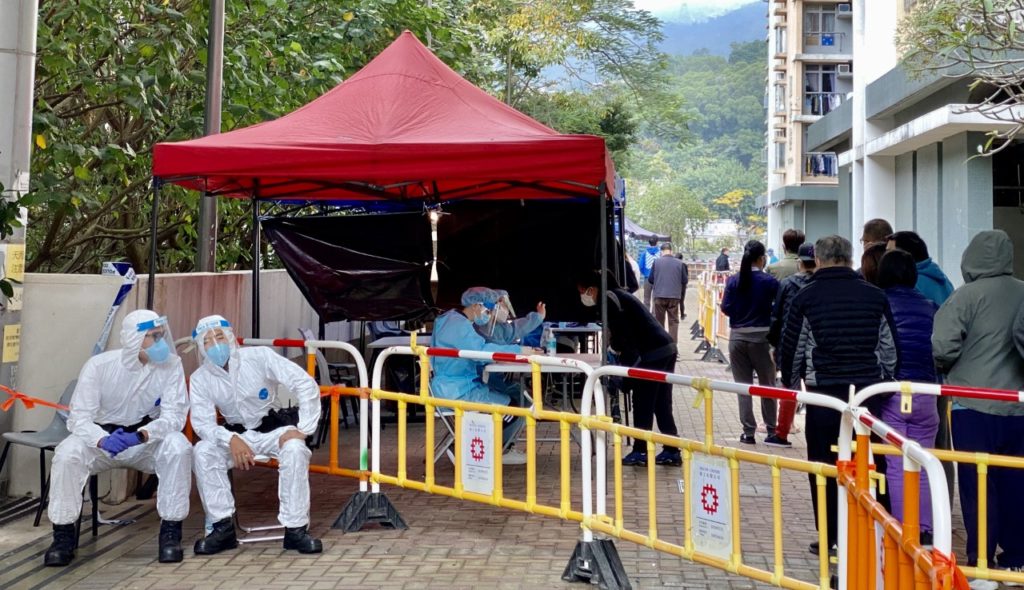
View the paper “Pandemic Refuges: Lessons from Two Years of COVID-19”
Refuges from an ecological perspective are defined as those places that are safe havens for species and habitats – more formally we tend to identify them as habitats that convey spatial and temporal resistance and/or resilience to biotic communities affected by disturbances. Refuges are garnering a large amount of attention in the conservation literature as we begin to observe accelerating climate impacts on biodiversity and are often prioritised for protection as places that are no regret options for investment. How to best protect species now and into the future is a big question that I am often confronted when supporting conservation planning for jurisdictions (e.g. we included climate refugia as a key conservation feature when planning with PNG, and more recently we’ve been grappling with this in Tasmania and what climate resilience might look like for private reserves).
Interestingly – refuges have played a similar role or definition in the human risk analysis and management literature. Refuges have been proposed as a means of ensuring that at least some people survive a global catastrophe. While it would be better to avoid the catastrophe in the first place, if a catastrophe is to occur, a refuge could be a real difference-maker in terms of the long-term effects on human civilization. Prior global catastrophe refuges research emphasizes highly isolated locations such as islands (also great refuges for biodiversity so I guess humans and biodiversity have some shared characteristics in their refuge needs). My friend, family member, and now valued colleague Seth Baum of GCRI grapples with these questions in his global catastrophe work.
Through varied ponderings we discovered this concept of refuges overlap in our respective disciplines and our own lived experiences during the first two years of the COVID-19 pandemic prompted us to think more seriously about how to define, identify, and leverage the refuge concept as a politically viable policy response to global catastrophes. This work led to a paper which we co-authored in the journal of Risk Analysis.
Whether COVID-19 classifies as a global catastrophe is a matter of interpretation. It is certainly a global event that has had catastrophic effects for many people. However, as the paper shows, it does not meet the criteria of most published definitions of global catastrophe. Nonetheless, as an extremely severe global event, it provides a rare and important source of evidence for the study of global catastrophic risk. (See also the GCRI Statement on the COVID-19 Pandemic.)
During the first two years of COVID-19, several political jurisdictions have effectively served as refuges by maintaining a very low spread of the SARS-CoV-2 pathogen. Some of these jurisdictions have sought to avoid any transmission of SARS-CoV-2, a policy sometimes known as “zero COVID”. Residents of these jurisdictions were able to live relatively normal lives without risk of SARS-CoV-2 infection. Furthermore, in the event that the pandemic were to prove overwhelmingly catastrophic for other jurisdictions, these refuges could offer a survivor population.
Prior research on refuges for pandemics focused on island nations on grounds that their geographic isolation and political unity would make them effective places for avoiding the pandemic pathogen. During the first two years of COVID-19, some island nations have served as refuges; Australia and New Zealand are examples. However, this paper shows that other jurisdictions can also succeed as refuges.
The paper studies two jurisdictions with especially low spread of COVID-19: China and Western Australia. China is the most populous country in the world, with extensive and heavily populated land borders with other countries. Western Australia is sub-national jurisdiction that is connected by land to the rest of the country, although the land connection is a sparsely populated desert. The two jurisdictions differ in other respects: China is authoritarian and has a collectivist culture, whereas Western Australia is democratic and has an individualist culture. Nonetheless, both jurisdictions have a high degree of political centralization and capacity for isolation. During the pandemic, both have also been highly motivated to avoid pathogen spread. Together, the cases provide a more nuanced understanding of the sorts of jurisdictions that can succeed as refuges for pandemics and perhaps also for other global catastrophe scenarios.
The COVID-19 pandemic is not over. As the pandemic continues to unfold, more will be learned about refuges and other topics of relevance to global catastrophic risk. Indeed, several significant events occurred while the paper was under peer review, including China’s struggle to contain the new Omicron variant and Western Australia’s decision to open its borders. In fact, as I sit here writing this blog the ‘refuge endgame’ is the next big question for me. What does an optimal or even mildly successful exit from refuge status look like (and how do we define success in order to guide optimal policy design)? We are living a natural experiment which provides the conditions by which to evaluate successful policies and to learn from them for future pandemics and other global catastrophes.
The paper extends GCRI’s research on the aftermath of global catastrophe, especially the paper Isolated refuges for surviving global catastrophes.
Academic citation:
Baum, Seth D. and Vanessa M. Adams, forthcoming. Pandemic refuges: Lessons from two years of COVID-19. Risk Analysis, DOI 10.1111/risa.13953.
Image credit: Voice of America
